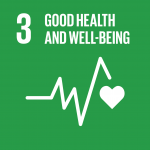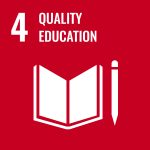 Yogyakarta, June 25, 2025 — The “Modelling 101” session, part of the MIDSEA Summer School series, was successfully held in the Arjuna Room at Alana Hotel Yogyakarta. The event was attended by 13 participants from various countries, including Indonesia, the Philippines, Japan, and Thailand. Participants came from diverse backgrounds, ranging from lecturers, researchers, WHO representatives, to students.
Yogyakarta, June 25, 2025 — The “Modelling 101” session, part of the MIDSEA Summer School series, was successfully held in the Arjuna Room at Alana Hotel Yogyakarta. The event was attended by 13 participants from various countries, including Indonesia, the Philippines, Japan, and Thailand. Participants came from diverse backgrounds, ranging from lecturers, researchers, WHO representatives, to students.
The session featured three main speakers: Dr. Hannah Clapham, Assistant Professor from the Saw Swee Hock School of Public Health; Prof. Jomar Fajardo Rabajante from the University of the Philippines Los Baños; and Dr. Wirichada Pan-Ngum from the Mahidol-Oxford Tropical Medicine Research Unit (MORU). All three delivered complementary material on the fundamentals of modeling in infectious disease epidemiology.
The morning session focused on using the R programming language to simulate epidemiological models. Participants were asked to run simulations independently until successful, with groups formed to combine participants unfamiliar with R with those who were more experienced.
The first material was delivered by Dr. Hannah Clapham. In this session, participants learned to simulate infectious disease spread using the SIR (Susceptible–Infectious–Recovered) model built with the R programming language and the deSolve package. This model was used to describe infection dynamics in a population of 5.7 million people, assuming one initial infection case. Key parameters used included the basic reproduction number (R0) and the recovery rate (γ), representing the transmission rate and the average duration of infection. Ordinary Differential Equations (ODEs) were formulated to calculate changes in the number of individuals in each category over time, and simulation results were visualized graphically. Participants also calculated the daily incidence of reported cases by considering a 25 percent reporting proportion. The simulation ran for six months and was further explored with variations in R0 values (1, 3, 4, and 5) to observe their impact on disease spread patterns.
The second material was delivered by Dr. Wirichada Pan-Ngum. In this session, participants built an SEIR model to simulate the spread of Hepatitis E, considering births, deaths, infections, recoveries, and the proportion of reported cases. The main parameters in this model were estimated using the Maximum Likelihood Estimation (MLE) method via the optim function and the Nelder-Mead algorithm. The simulation results were then compared with real-world weekly case data to evaluate the model’s fit.
Two models were used in this practical session. The first model explained the spread of Hepatitis E without intervention, using an SEIR approach that considered various demographic and epidemiological factors. Important parameters such as the basic reproduction number (R0) and initial population were estimated via MLE and adjusted to weekly data. Meanwhile, the second model was an extension of the first, adding two types of interventions: vaccination and improved sanitation (latrine), aiming to reduce the disease transmission rate. Adjusting the timing and effectiveness of interventions allowed the model to evaluate the impact of health policies more comprehensively. Additionally, the inclusion of a vaccination compartment (V) enabled the simulation of phased immunization campaigns. Model evaluation was based not only on the number of weekly cases but also on the final size of the outbreak based on cumulative reports. The structural differences between these two models yielded different parameter estimates and provided broader insights into epidemic management strategies.
One crucial point emphasized in this track was that when building a model, a modeller should not begin by asking “what data do I need?”, but rather by first identifying what data is available and constructing the model based on that data. Furthermore, incidence data, i.e., the number of new cases within a specific time period, is a critical component that needs to be known beforehand, as it plays a significant role in the process of validating the model against real-world data.
 Keywords: MIDSEA, Modelling, Infectious Diseases Modelling
Keywords: MIDSEA, Modelling, Infectious Diseases Modelling
Author: Leniy Eka Watiy
Photos: Lucetta Amarakamini

